#brushturkey
Text

Australian Brushturkey (Alectura lathami), family Megapodidae, Eastern Australia
Photograph by Jan Wegener
2K notes
·
View notes
Photo
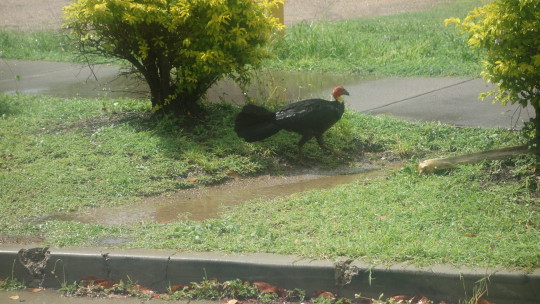


Australian brushturkey on James Cook University’s Townsville campus in Queensland, Australia
7 notes
·
View notes
Photo
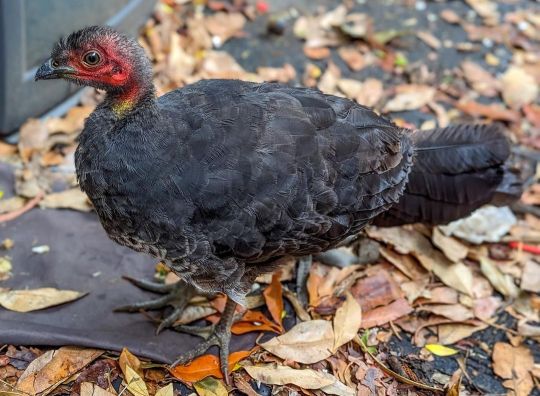
Another youngling with an exceptionally bright head has turned up in the garden. I’m further convinced there’s an active mound very near our house. #brushturkey #brushturkeys (at Sydney, Australia) https://www.instagram.com/p/CnzLI96P4wZ/?igshid=NGJjMDIxMWI=
5 notes
·
View notes
Text
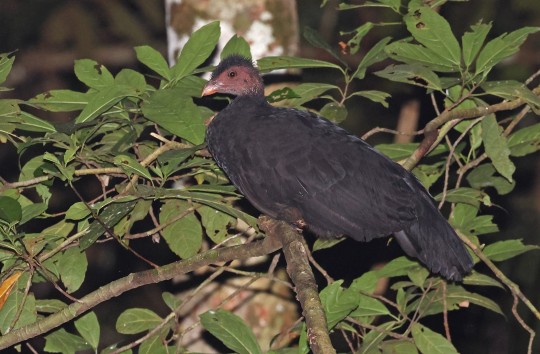
[2539/11080] Collared brushturkey - Talegalla jobiensis
Also known as: red-legged brushturkey
Order: Galliformes
Family: Megapodiidae (megapodes)
Photo credit: Robert Hutchinson via Macaulay Library
#birds#Collared brushturkey#Galliformes#Megapodiidae#Talegalla#birds a to z#red-legged brushturkey#undescribed
47 notes
·
View notes
Text

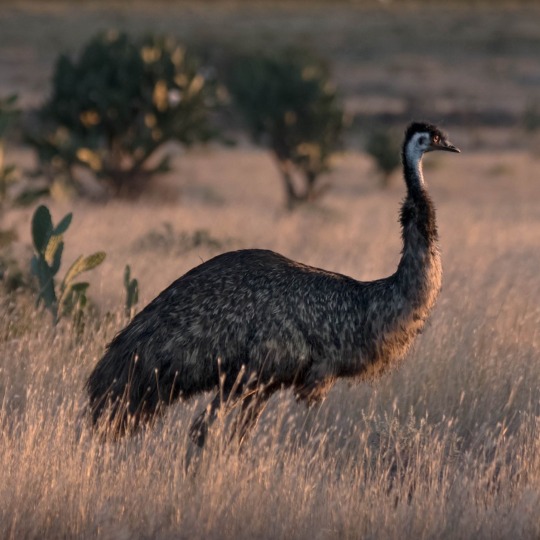
Remember to read about the contestants before voting!
Australian Brushturkey
With a beautiful little waddle, the Australian Brushturkey is actually not closely related to the Turkey! Another bird who survived the brink of extinction to live another day, they build huge nests in order to incubate their young. The temperature, regulated by the male Brushturkey by adding and removing material, can impact the sex of the hatched egg. At a certain temperature, the chance for male or female is 50%, but at colder temperatures females are more likely and vice versa. Learn More!
Emu
We all know of the Emu War… and if you don’t I would highly recommend looking it up. Back when Australia was first being used as a place to send prisoners, some farmers were having a hard time settling down due to the population of Emus already there. So began the emu wars. Armed with a shitty truck and a couple of guns, a few men went out to demolish the Emus. And of course… the Emu won! With their tough hides and the bumpy terrain, they were easily able to stand up against their attackers and take gunshot wounds in stride. Soon, with more Australians coming to the side of the emu, they eventually gave up their battle and the Emu lived on in their habitat. Learn More!
(Australian Brushturkey photo by Ken Wright)
(Emu photo by Hayley Alexander)
113 notes
·
View notes
Text
Australian Brushturkey (Alectura lathami)

"They make huge piles of leaves and branches as nests. Once I saw a solitary male in a wildlife park and the keepers said he was really annoying because he kept re-arranging the leaf litter which made keeping the footpaths clean a huge pain lol!"
"Small gardener-dinosaurs! And these guys are just out here existing with zero parental care."
"Despite its name and their superficial similarities, the bird is not closely related to American turkeys, nor to the Australian bustard, which is also known as the bush turkey."
Australian Brushturkey are a megapode found on the Eastern edge of Australia, typically living in rainforests or wet sclerophyll (eucalyptus-heavy) forests- though they've more recently been moving into cities such as Brisbane and Sydney.
As megapodes, the most unique feature of these birds is the way they incubate and "raise" their young- which is to say, they don't raise them at all! Megapodes are a family of birds that create mounds of rotting vegetation for their eggs to incubate within, much like crocodiles and alligators. The males will tirelessly defend their mounds, checking the temperature with their bills and doing their best to attract females to lay her eggs within. This is the only care they give their young, however. Brushturkey eggs are quite large, and their chicks are born precocial, or "fully developed". Unlike other precocial species, like chickens or ducks, megapode babies can fend for themselves within hours of hatching, and don't need parental guidance in order to make it in the world. Which is good news, since mom invests no care in her young and dad is only concerned with keeping his nest mound in perfect condition!
Sources:
Image Source: eBird (Chris Barnes)
#Alectura lathami#Australian brushturkey#Gweela#megapode#australian wildlife#Australian birds#megapodiidae#in memoriam (joke)
8 notes
·
View notes
Photo
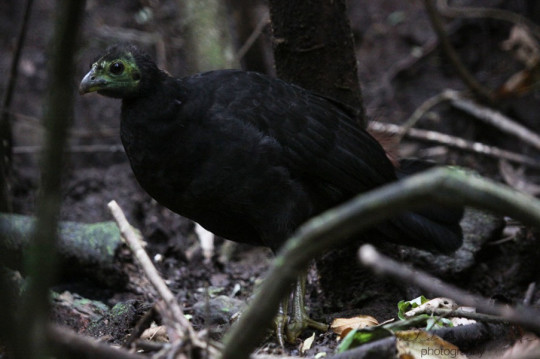
A new variant has been added!
Wattled Brushturkey (Aepypodius arfakianus)
© Mehd Halaouate
It hatches from bare, black, blue, difficult, dull, facial, female, large, male, maroon, other, pale, quiet, red, sharp, shy, and similar eggs.
squawkoverflow - the ultimate bird collecting game
🥚 hatch ❤️ collect 🤝 connect
0 notes
Note
brushturkeys are Such animals. one time I saw one carefully reconnoiter and then sneak up behind someone at the beach to open their half-zipped food bag and drag out a loaf of bread
That's DELIGHTFUL.
218 notes
·
View notes
Text
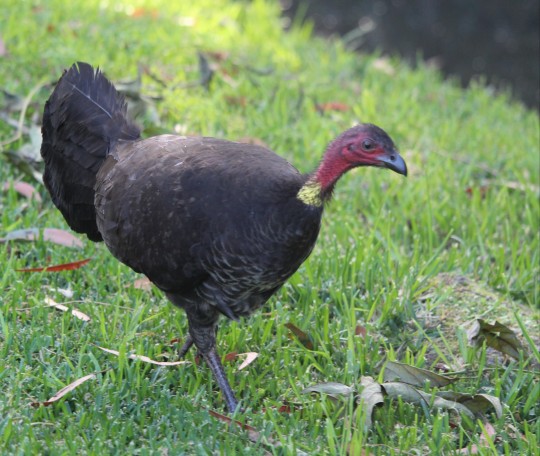
Second Roadtrip bird!
The Australian Brushturkey/gweela (Though we lovingly call them Bushturkeys)
These are a pretty common sight in Aussie caravan parks, I would say a vacation isn't complete if you don't see one.
16 notes
·
View notes
Text
Days 14-16 of Australia vacation: back in Sydney
On Day 14, we got up early to fly back to Sydney.
There were some nice views out the window of the plane, and we arrived early enough to go to the beach in the afternoon. On our way to the beach, though, we had to make a stop. Brother-in-law had found a Sydney funnelweb spider (which is the world's most venomous kind) in their outdoor shower, so he had captured it in a container to drop off so that the venom could be harvested for use in making the antidote. Eeek!
While we were looking for parking near the beach, I saw what the in-laws called an Australian bush turkey, though eBird calls it an Australian Brushturkey. The beach was pleasant; the others snorkeled and I just enjoyed being in the water for a bit and then did some tidepooling. I think I saw a sea slug! And there were medium-sized lizards called water dragons on some rocks on our way back to the car. It was nice to see some wildlife even in the city!
Unfortunately, right at bedtime I found some "wildlife" in the bedroom: a spider was perched on a corner of a cushion on the bed, and everyone else was already asleep. It was not a venomous spider, but I couldn't sleep with it on the bed, and I didn't want to wake anyone up. It took me a while to gather up all my courage to pick up the cushion from the other end and take it outside. But I did it!
Day 15 was our last day in Australia. We had a bit of a slow start. Sister-in-law had returned to work, and Brother-in-law had a work event in the morning but was joining us for lunch. We took the train (I saw what I think was a female Australasian figbird in a tree near the station) into town and took a little walk along the water in Barangaroo. Then we walked over to the Queen Victoria Building, where we had reserved a table for High Tea service at lunchtime with Brother-in-law; Sister-in-law joined us for a few minutes to say hello on a break from work. The Tea Room is a huge hall with fancy chandeliers, and it feels both silly and luxuriously indulgent to have a meal there. We ate an exquisite array of little sandwiches, pastries, and scones on ornate china, accompanied by tea (decaf Ceylon for me) and sparkling wine.
Afterwards, Wife and I visited the Powerhouse Museum, which had an eclectic mix of exhibitions on various industries, including a section on Indian textiles, a collection of clothing designed by Australian designer Carla Zambatti, and the first train engine to operate in Australia along with 3 restored passenger cars (1st class, 2nd class, and 3rd class).
Then we took the modern commuter rail back, and spent a little while hanging out in a small playground waiting for one of the in-laws to get home since we didn't have a key to the house. While there, I spotted a gray butcherbird, which is a species I hadn't seen yet.
We had a relaxed evening at home. Brother-in-law cooked a scrumptious dinner of risotto, chicken, and broccoli, and we looked at some photos from the trip.
On Day 16, we said goodbye to Sister-in-law before she left for work. We then spent the morning packing; we had to borrow an extra piece of luggage to fit everything. When we were getting ready to leave, I noticed a large bird up in a tree. I unpacked the binoculars to look at it and discovered that it was my first Pied Currawong!
Brother-in-law dropped us off at the airport. He had made arancini (fried risotto balls) from the leftovers from the previous night and put some in a box to bring along, so I had a nice snack on the plane. The flight home was 13 hours long; I dozed for much of it, and it was a good thing I had the arancini because the flight was too turbulent for the flight attendants to serve breakfast before landing! We arrived a few hours before our departure time due to crossing the International Date Line.
All in all, we had a great trip--it really felt like a vacation. I was intrigued to notice how very not interested in the urban sightseeing I felt, but most of the time we weren't in cities, and the scenery, wildlife, and birds were great. Somehow I managed to see at least one new species of bird on each day of the trip!
I don't know if I'll ever get a chance to go back to Tasmania, but if I do, I must find a way to visit Bruny Island for a full-on birdwatching tour.
8 notes
·
View notes
Text
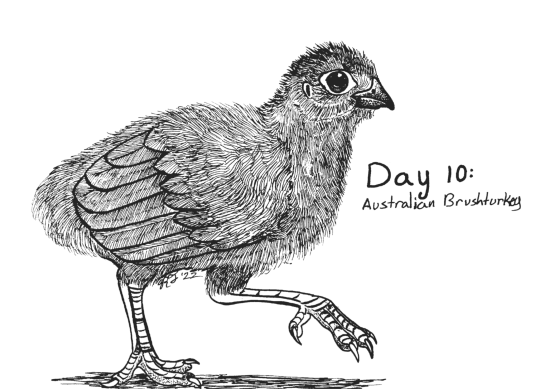
Birdtober 2022
Day 10: Baby Bird
Species: Australian Brushturkey (Alectura lathami)
A member of the Megapode family, a very unusual group of birds. Also known as incubator birds or mound-builders, these birds create huge nest mounds composed of a layer of compost covered by a layer of sand. The eggs are warmed by the decomposing organic matter and hatch only after a very long incubation period. Unique among this group of birds is their young being "superprecocial" which means they are fully independent the moment they hatch, even being able to fly right out of the egg.
11 notes
·
View notes
Text
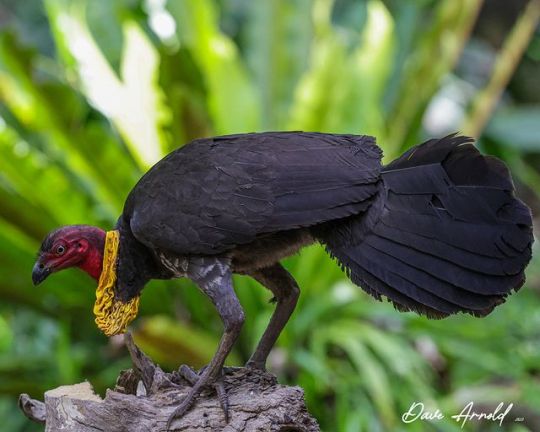
Australian Brushturkey (Alectura lathami), family Megapodidae, order Galliformes, QLD, Australia
Photograph by Dave Arnold
416 notes
·
View notes
Photo
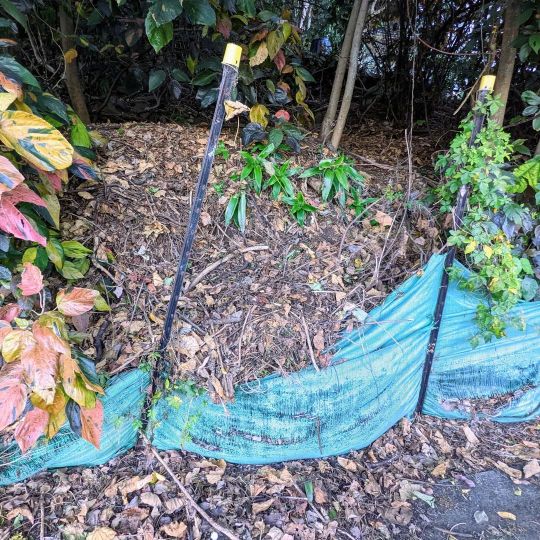
Council workers were able to keep this section of the sidewalk open from an overflowing brushturkey nest using a temporary fence. It seems to have worked! (at Kingscliff, New South Wales) https://www.instagram.com/p/ClHlhKdhiOxJLsktC0udmKYIKRfvBad35EwjK00/?igshid=NGJjMDIxMWI=
8 notes
·
View notes
Photo

One of the young’uns who’s adopted our garden. Hubbs named him Ryan Gosling. (FotoCred:Mr.Fūd) #brushturkey #brushturkeys (at Sydney, Australia) https://www.instagram.com/p/CpOd3LSPbbY/?igshid=NGJjMDIxMWI=
4 notes
·
View notes
Text

[447/10,977] Australian Brushturkey - Alectura lathami
Order: Galliformes
Family: Megapodiidae (megapodes)
Photo credit: J J Harrison
125 notes
·
View notes
Note
Love your tags about Australia. Also Brushturkeys are like, only in some specific areas of Australia, not the whole place 😂😂😂. I was literally like????? But turns out I don’t live in a state with them, they live along like a strip down the right side from top to 3/4 down. And a bit in Sydney and Brisbane and kangaroo island. You’ve successfully manage to observe a bird that like a ton of south/western Australians probably don’t even know exists, very cool ���🏻👍🏻
yeah honestly that makes more sense since i was pretty much in and around sydney the entire time. still was kinda wild just seeing them everywhere
2 notes
·
View notes